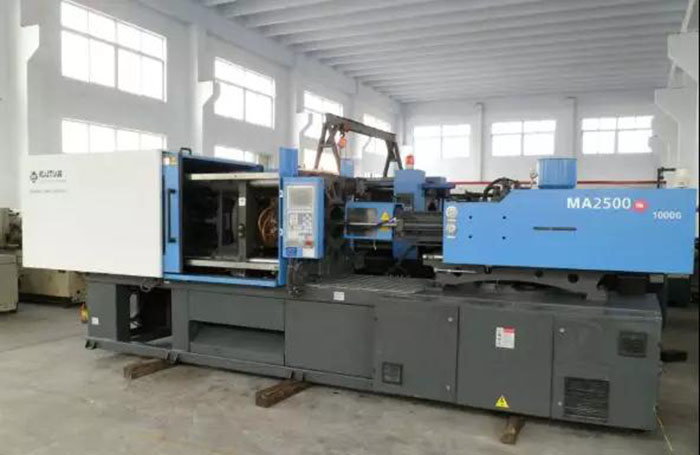After the read of this What Is The Hydraulic Working Principle Of The Injection Molding Machine article, you will learn:
What is Hydraulic?
Advantages and disadvantages of the hydraulic transmission system
What is the hydraulic working principle of the injection mold machine?
Hydraulic transmission uses hydraulic oil as the working medium, changes the mechanical energy of the prime mover into the pressure energy of hydraulic oil through the power element (oil pump), then passes through the control element, and then converts the pressure energy into mechanical energy by means of the actuator (oil cylinder or oil motor).
Drive the load to achieve linear or rotary motion, and adjust the force and speed of the actuator by remotely controlling the control element and adjusting the flow rate.
When the outside world disturbs the above system, the output of the actuator generally deviates from the original setting value, resulting in a certain error. Hydraulic control: Like hydraulic transmission, the system also includes power elements, control elements, actuators, Oil transfer power.
The difference between the two is that the hydraulic control has a feedback device.
The role of the feedback device is to feedback the output (displacement, speed, force, and other mechanical quantities) of the actuator to the input (which can be variable or constant). For comparison, use the deviation after comparison to control the system so that the output of the actuator changes or stays constant with the change of the input.
It is a hydraulic transmission system that constitutes a closed-loop circuit, also called a hydraulic servo system.
The hydraulic transmission system uses on-off or logic control elements. For its control purpose, it is to maintain the stability of the set value or simply change the direction, also called fixed value and sequence control elements.
Servo control elements are used in the hydraulic control system, which has a feedback structure and is controlled by electrical devices. It has high control accuracy and response speed, and the controlled pressure and flow often change continuously. The output power can be amplified.
Proportional control is a kind of control between the above two. The proportional control valve used is a new type of electro-hydraulic control element developed on the basis of the on-off control element and servo control element, which combines the above Some characteristics of the two types of components are used in the manual adjustment of the on-off control cannot meet the requirements but also does not require the servo valve to the hydraulic system of the strict pollution control requirements.
Advantages and disadvantages of the hydraulic transmission system
Advantages of the hydraulic transmission system
In the current four types of transmission methods (mechanical, electrical, hydraulic, and pneumatic), no power transmission is perfect, and hydraulic transmission has the following extremely obvious advantages:
- From the structural point of view, the output power per unit weight and the output power per unit size are strong in the four types of transmission modes and have a large torque inertia ratio. Under the condition of transmitting the same power, the hydraulic transmission device Small size, lightweight, small inertia, compact structure, and flexible layout.
- From the perspective of working performance, the speed, torque, and power can be adjusted steplessly, the response of the action is fast, the commutation and speed can be changed quickly, the speed adjustment range is wide, and the speed adjustment range can reach 100: 1 to 2000: 1; action Good speed, simple control and adjustment, convenient operation and labor-saving, easy to cooperate with electrical control, and connection with CPU (computer), easy to realize automation.
- From the point of view of use and maintenance, the component has good self-lubricity, easy to achieve overload protection and pressure retention, safe and reliable; the component is easy to achieve serialization, standardization, and generalization. All equipment using hydraulic technology is safe and reliable.
- From the perspective of economic cost: hydraulic technology has strong plasticity and variability, which can increase the flexibility of flexible production, and it is easy to change and adjust the production process. Relatively speaking, the manufacturing cost of hydraulic components is not high, and the adaptability is comparative Strong.
The combination of hydraulic pressure and new technologies such as microcomputer control constitutes a machine-electric-hydraulic-optical integration, which has become the trend of world development and is convenient for digitization.
Disadvantages of hydraulic transmission
Everything is divided into two, and hydraulic transmission is no exception:
- The hydraulic transmission inevitably leaks due to the relative moving surface, and the oil is not absolutely incompressible. With the elastic deformation of the oil pipe, the hydraulic transmission cannot obtain a strict transmission ratio, so it cannot be used in machine tools such as processing threaded gears. In the inline drive chain.
- There are edge loss, partial loss, and leakage loss in the process of oil flow, the transmission efficiency is low, and it is not suitable for long-distance transmission.
- Under high and low-temperature conditions, it is difficult to use hydraulic transmission.
- In order to prevent oil leakage and to meet certain performance requirements, the manufacturing accuracy of hydraulic components requires high, which brings certain difficulties to use and maintenance.
- Failures are not easy to check, especially in units where hydraulic technology is not very popular. This contradiction often hinders the further promotion and application of hydraulic technology. Hydraulic equipment maintenance depends on experience, and it takes a long time to train hydraulic technicians.
You may also be interested in the below articles:
Summary Of 50 Injection Mold Structure Operation Dynamic Diagrams




